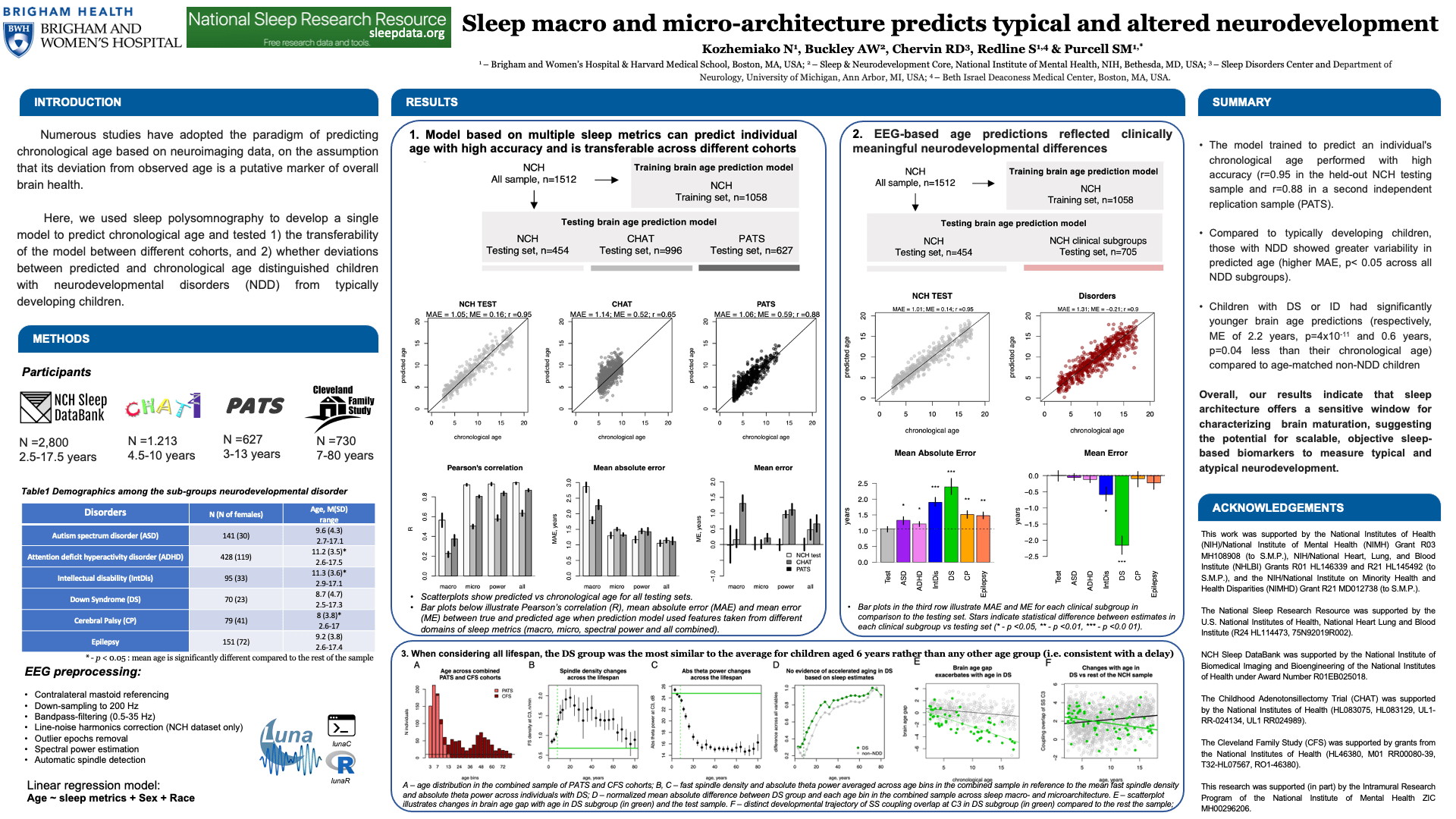Scientific Abstract
Background: Numerous studies have adopted the paradigm of predicting chronological age based on neuroimaging data, on the assumption that its deviation from observed age is a putative marker of overall brain health. Here, we used sleep polysomnography to develop a single model to predict chronological age and tested 1) the transferability of the model between different cohorts, and 2) whether deviations between predicted and chronological age distinguished children with neurodevelopmental disorders (NDD) from typically developing children.
Methods: The primary discovery dataset comprised 2,800 individuals (2.5-17.5 years) with whole-night PSGs from NCH Sleep Databank (from the National Sleep Research Resource). We defined six subsets within the NCH sample based on the presence of the following diagnoses: autism spectrum disorder, attention deficit and hyperactivity disorder, intellectual disabilities (ID), Down syndrome (DS), cerebral palsy, and epilepsy. We used 70% of the NCH sample as a training set and 30% as a testing set (individuals with NDD were excluded from both sets). To test the model’s transferability, we employed two additional datasets, the Childhood Adenotonsillectomy Trial (CHAT, N=1,213), and the Pediatric Adenotonsillectomy Trial for Snoring, (PATS, N=627).
Results: The model trained to predict an individual’s chronological age performed with high accuracy (r=0.95 in the held-out NCH testing sample and r=0.88 in a second independent replication sample (PATS). Our finding indicated that EEG-based age predictions reflected clinically meaningful neurodevelopmental differences. For example, compared to typically developing children, those with NDD showed greater variability in predicted age, and children with DS or ID had significantly younger brain age predictions (respectively, 2.2 years, p=4´10-11 and 0.6 years, p=0.04 less than their chronological age) compared to age-matched non-NDD children.
Conclusion: Overall, our results indicate that sleep architecture offers a sensitive window for characterizing brain maturation, suggesting the potential for scalable, objective sleep-based biomarkers to measure typical and atypical neurodevelopment.
Search posters

